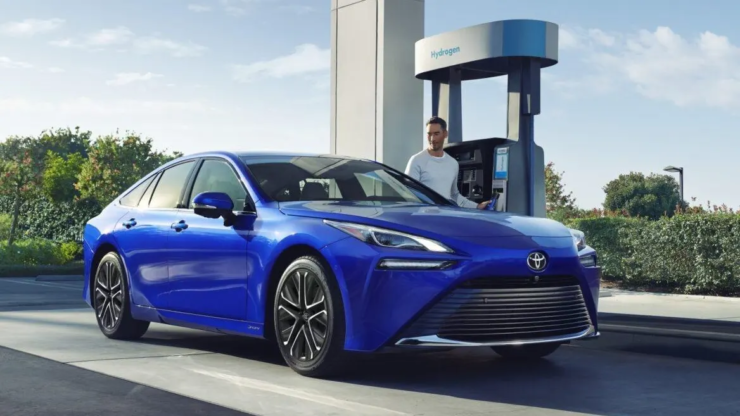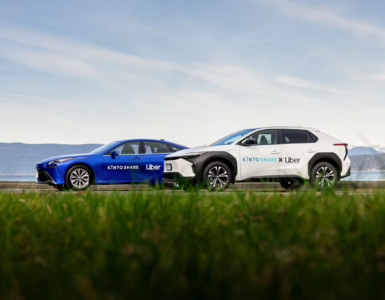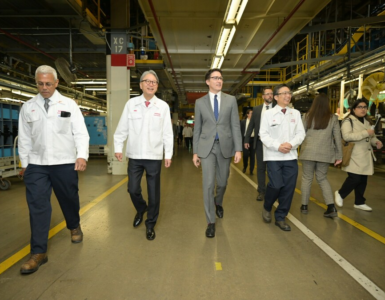Here’s How To Drive A Hydrogen Fuel Cell Car For Next To Nothing – Forbes.
Environmentalists frequently cite clean-burning hydrogen as being the fuel of the future for the nation’s fleet of cars, trucks and SUVs. Problem is, it’s been manifest destiny for the last 20 years or more and might take another two decades or longer to catch on with the general public.
As it stands only two hydrogen fuel cell vehicles are currently being sold in the U.S. – the Hyundai Nexo and Toyota Mirai. Honda will debut a plug-in-hybrid hydrogen-powered version of its compact crossover SUV later this year, the CR-V e:FCEV, to replace the fuel-cell Clarity that was discontinued in 2020.
Unfortunately, due to a dearth of hydrogen filling stations in the U.S., fuel-cell cars are only available in California and at that are limited to drivers who have access to one of the state’s few hydrogen stations currently located in or near Los Angeles and San Francisco.
🔥 What about we co-host a webinar? Let's educate, captivate, and convert the hydrogen economy!
Hydrogen Central is the global go-to online magazine for the hydrogen economy, we can help you host impactful webinars that become a global reference on your topic and are an evergreen source of leads. Click here to request more details
For those not familiar with the technology, a fuel cell essentially turns stored hydrogen and oxygen from the atmosphere into electricity, which is used to power an electric motor. The Mirai, for example, outputs the equivalent of 182 horsepower with 300 pound-feet of torque, and can run for an estimated 402 miles with a full supply of hydrogen. It’s 161 horsepower with 291 pound-feet for the Nexo, with a 354-380-mile range, depending on the trim. A refill takes only a few minutes, provided one has access to a hydrogen facility. The car’s only emissions are water droplets released from beneath the vehicle.
As sales continue to be razor-thin (Toyota sold 2,737 Mirais last year, while Hyundai moved a mere 241 Nexos) those residing in the Golden State who find the concept intriguing can take advantage of some truly hefty incentives being slapped on the hoods of either model.
Hyundai is granting Nexo buyers a generous $35,000 off a sticker price that starts at a just over $60,000 plus 0% financing for up to five years (versus an average 7%) for qualifying buyers. That comes out to a combined savings of around $39,700 over the life of the loan.
The Mirai is arguably an even better deal this month, with Toyota offering $22,000 off the base XLE trim that starts at $50,190, and $30,000 on the loaded-up $67,115 Limited. While the car is likewise being offered with 0% financing for up to 72 months, Toyota adds another $15,000 worth of free hydrogen fill-ups over six years to further sweeten the deal. That’s a combined potential savings of a whopping $51,980 on the top model.
As if that’s not enough, both cars qualify for a one-time $4,500 rebate ($7,500 for income-qualifying purchasers) from California’s Clean Vehicle Rebate Project. And let’s not forget the dealer’s discount, which we could assume would be plentiful in either case for astute hagglers.
On the downside, keeping a fuel cell vehicle filled without a free-hydrogen subsidy can prove to be costlier than keeping an electric car charged at home. According to the website hydrogeninsight.com, California’s largest hydrogen retailer, True Zero, recently raised the price to $36/kg, which is up dramatically from the $13.14/kg it was charging back in 2021. As the website notes, that comes out to around $0.50 per mile to run a Mirai, versus $0.036 with a Tesla Model 3, at that’s at California’s already steep fuel prices.
Still, these deals pave the way to affordably drive the car of the future – however distant that may be – here today.
READ the latest news shaping the hydrogen market at Hydrogen Central
Here’s How To Drive A Hydrogen Fuel Cell Car For Next To Nothing – Forbes. source








